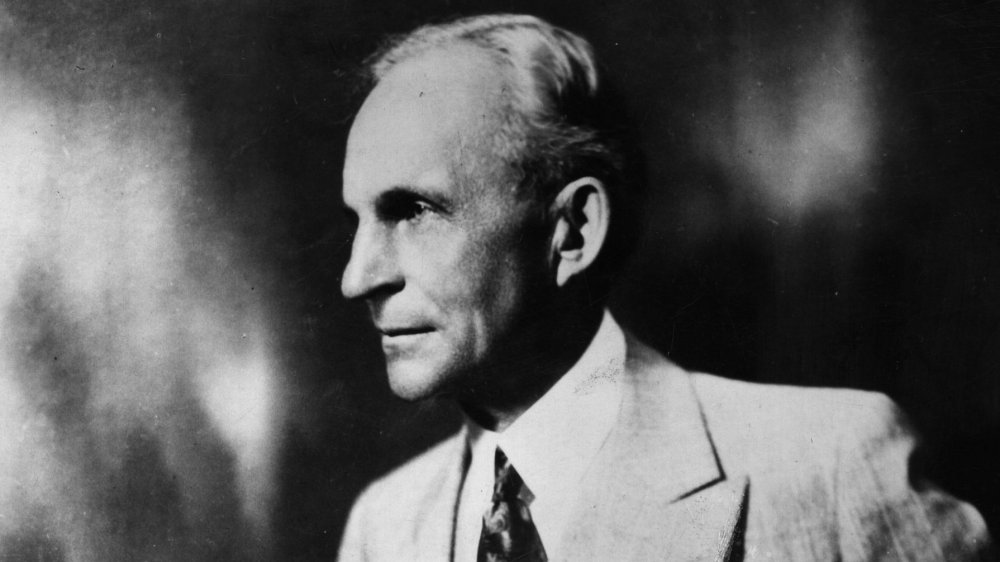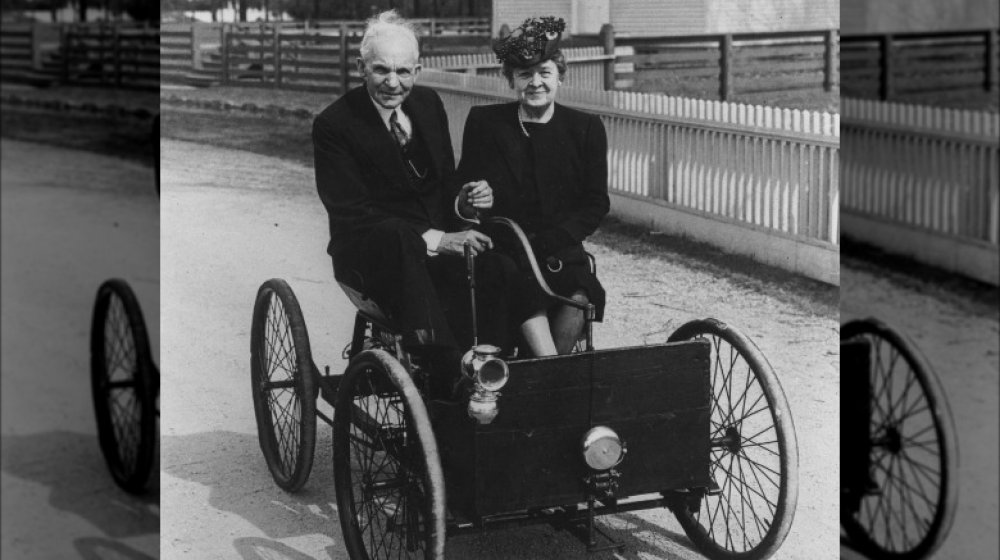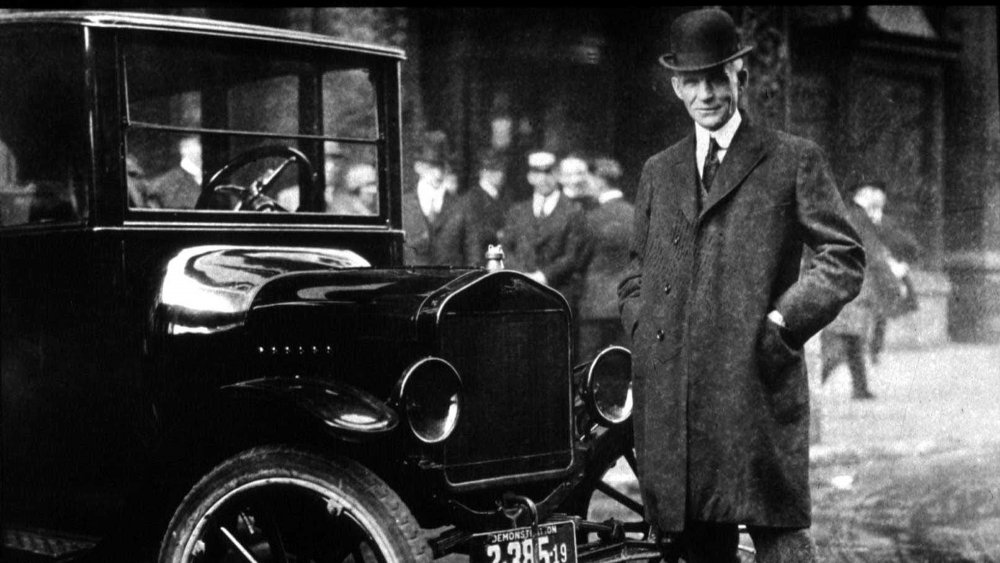Here's How Much Money Henry Ford Would Be Worth Today
Have you driven a Ford lately? If so, what color was it? If you listened to Henry Ford's sage advice, you'd always bet on black. Wait, no, that was Wesley Snipes' famous one-liner in Passenger 57. Ford's quote was an assembly-liner: "Any customer can have a car painted any color that he wants so long as it's black." But no, we must hold our horsepower once more because according to Jeopardy legend Ken Jennings, when the first Ford Model T's hit the road, "customers could get almost any common color... except for black!" Look, the point is that Henry Ford was the Wesley Snipes of automobile sales. That's either awesome or awful, depending on your concept of Wesley-ness.
History writes that Ford produced "the world's first moving assembly line for cars," and the Independent credits Snipes' film, Blade, with the creation of the Marvel Cinematic Universe, which is basically the assembly line of Superhero movies. Once you go beyond the assembly line, the comparison falls apart. After all, Snipes used a bogus religious organization, described by the New York Post as an "accounting ministry," to dodge taxes. By contrast, Ford's mother and mother-in-law had a chapel named after them. Plus, Henry Ford had a hell of a lot more money.
The auto man empire
Henry Ford put the "Motor" in "Motor City" while working as an engineer for the Detroit-based Edison Illuminating Company. Per History, he constructed a "gasoline-powered horseless carriage" dubbed the Quadricycle, which he kept in a horseless stable known as a shed. In 1903, he founded Ford Motor Company and in 1908, he rolled out the first Model T, or "Tin Lizzie." The beauty of the Model T was that it was ugly and cheap. Per The Daily Beast, investors wanted the company to crank out cars most people couldn't afford. But Ford believed he would earn more money selling cheap cars to the masses. His gamble paid off handsomely, and by the time Ford quit cranking out Model T's, he had sold 15 million of them. In 1913, Ford changed the face of carmaking with his assembly line, which later enabled his company to pump out one car every 24 seconds.
Cars and good times rolled for Ford, who turned his company into the largest auto manufacturer on the planet. He also took some abominably wrong turns, like when he published articles under the headline, The International Jew: The World's Problem, and later voiced support for Hitler. Ford was also notoriously anti-union. Perhaps the ugliest expression of that disdain happened in the 1937 Battle of the Overpass. As Smithsonian details, the United Autoworkers Union organized a protest targeting Ford Motor Company's River Rouge complex in Dearborn, Michigan.
Demonstrators congregated on the Miller Road Overpass, but Ford wielded "a private police force composed of ex-convicts, ex-athletes, ex-cops and gang members." When the unionists refused to disperse, Ford's hired muscle started busting heads. UAW leader Walter Reuther got "kicked, stomped, lifted into the air, thrown to the ground repeatedly, and tossed down two flights of stairs." Another union leader got thrown over the overpass, landing on the unforgiving pavement 30 feet below.
How a 40-hour work week worked in Ford's favor
Henry Ford didn't just make money by remaking the auto industry. Some people credit him with inventing the five-day, 40-hour work week as a means of increasing productivity and fattening his pockets in the process. Politifact checked that claim, and while there's merit to it, but it comes with a gigantic asterisk. First: a bit of context. Eight-hour work days date back to the 1860s. In the aftermath of the Civil War, the re-United States of America began passing laws that nominally limited working hours. However, enforcement of the law was inconsistent or nonexistent for the most part. This fomented unrest among workers, prompting demands, demonstrations, and violence in the 1880s.
Fast-forward to 1914, the year after Ford incorporated the moving assembly line into his operations. Employees had a six-day, 48-hour work week, but Ford shortened it to 40 hours and increased pay from $2.34 to $5 for male workers. According to History, he raised female employee pay to $5 in 1916. However, that arrangement came with strings attached. Workers had to submit to an inspection of their home to determine if they "deserved" the $5 wage and five-day work week.
More importantly, Ford dictated the terms. Professor Robert Bruno of University of Illinois School of Labor and Employment Relations explained, "It was a unilaterally provided benefit at the discretion of the employer and could be yanked away whenever the cost exceeded profits." Meanwhile, Ford's profits exceeded most people's wildest dreams. Per Celebrity Net Worth his net worth was $200 billion when adjusted for inflation.


